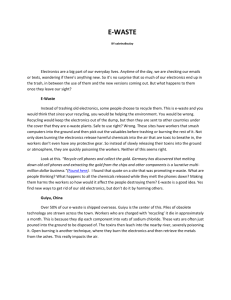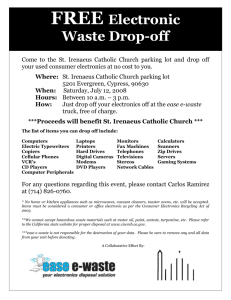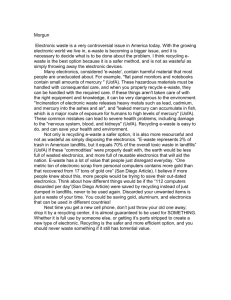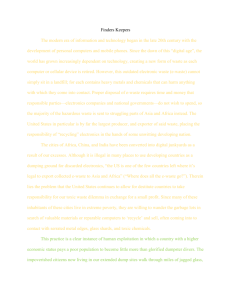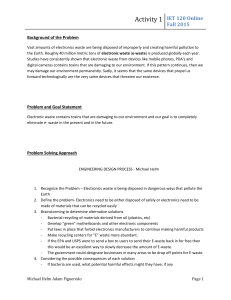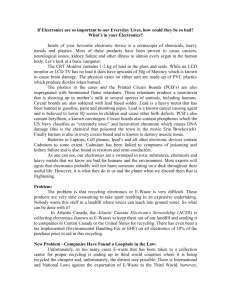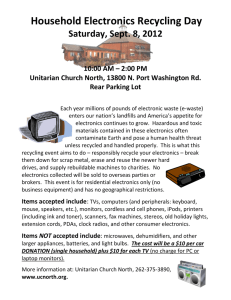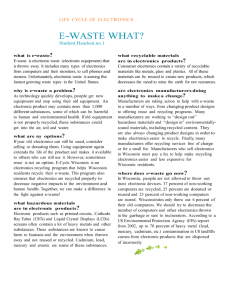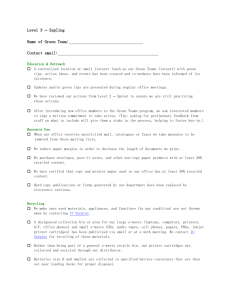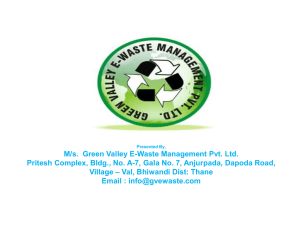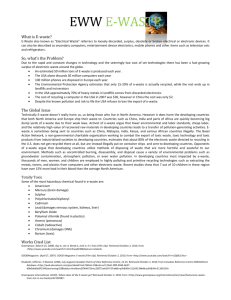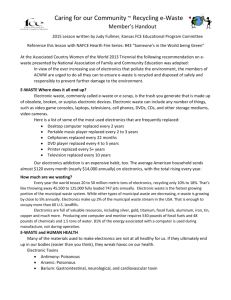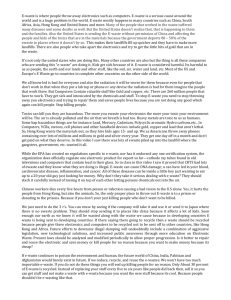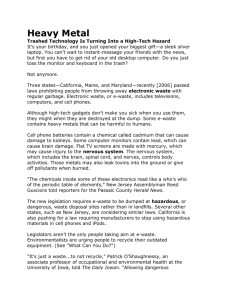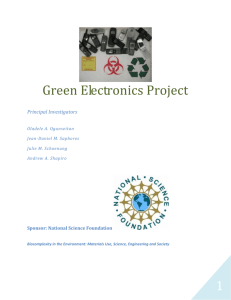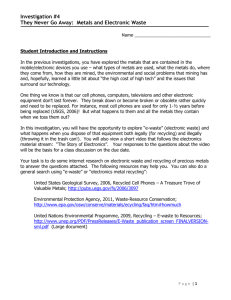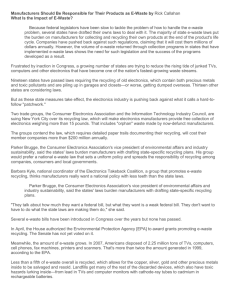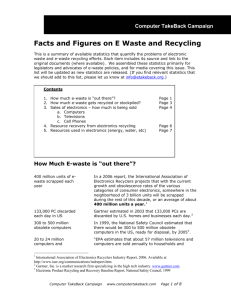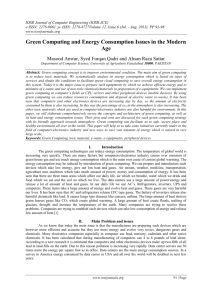editorial nick
advertisement
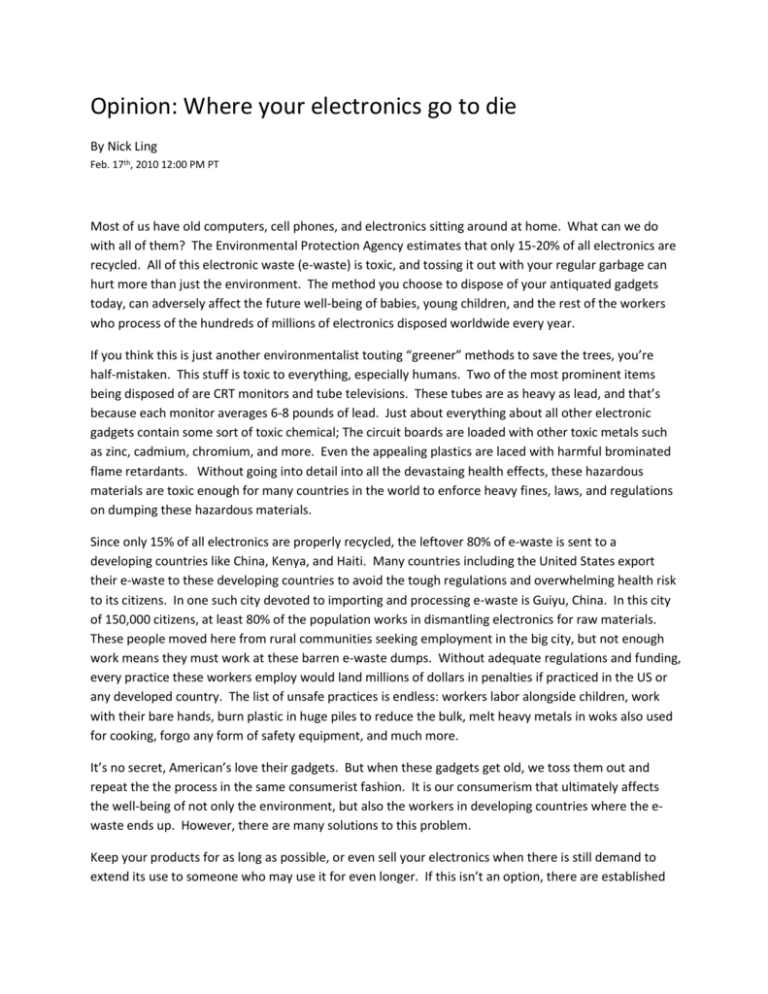
Opinion: Where your electronics go to die By Nick Ling Feb. 17th, 2010 12:00 PM PT Most of us have old computers, cell phones, and electronics sitting around at home. What can we do with all of them? The Environmental Protection Agency estimates that only 15-20% of all electronics are recycled. All of this electronic waste (e-waste) is toxic, and tossing it out with your regular garbage can hurt more than just the environment. The method you choose to dispose of your antiquated gadgets today, can adversely affect the future well-being of babies, young children, and the rest of the workers who process of the hundreds of millions of electronics disposed worldwide every year. If you think this is just another environmentalist touting “greener” methods to save the trees, you’re half-mistaken. This stuff is toxic to everything, especially humans. Two of the most prominent items being disposed of are CRT monitors and tube televisions. These tubes are as heavy as lead, and that’s because each monitor averages 6-8 pounds of lead. Just about everything about all other electronic gadgets contain some sort of toxic chemical; The circuit boards are loaded with other toxic metals such as zinc, cadmium, chromium, and more. Even the appealing plastics are laced with harmful brominated flame retardants. Without going into detail into all the devastaing health effects, these hazardous materials are toxic enough for many countries in the world to enforce heavy fines, laws, and regulations on dumping these hazardous materials. Since only 15% of all electronics are properly recycled, the leftover 80% of e-waste is sent to a developing countries like China, Kenya, and Haiti. Many countries including the United States export their e-waste to these developing countries to avoid the tough regulations and overwhelming health risk to its citizens. In one such city devoted to importing and processing e-waste is Guiyu, China. In this city of 150,000 citizens, at least 80% of the population works in dismantling electronics for raw materials. These people moved here from rural communities seeking employment in the big city, but not enough work means they must work at these barren e-waste dumps. Without adequate regulations and funding, every practice these workers employ would land millions of dollars in penalties if practiced in the US or any developed country. The list of unsafe practices is endless: workers labor alongside children, work with their bare hands, burn plastic in huge piles to reduce the bulk, melt heavy metals in woks also used for cooking, forgo any form of safety equipment, and much more. It’s no secret, American’s love their gadgets. But when these gadgets get old, we toss them out and repeat the the process in the same consumerist fashion. It is our consumerism that ultimately affects the well-being of not only the environment, but also the workers in developing countries where the ewaste ends up. However, there are many solutions to this problem. Keep your products for as long as possible, or even sell your electronics when there is still demand to extend its use to someone who may use it for even longer. If this isn’t an option, there are established e-waste recycling processing centers that will safely deal with the product. We can even go further and urge manufacturers to produce greener products without the toxic chemicals. The technology is here, but the demand for such products is not. If you have to dispose of your e-waste, properly recycling it is important. It’s good for the environment, better for me, and best for you. Nick Ling is a student at the University of Washington majoring in Informatics and Environmental Health. He can be reached at nickling@uw.edu.


